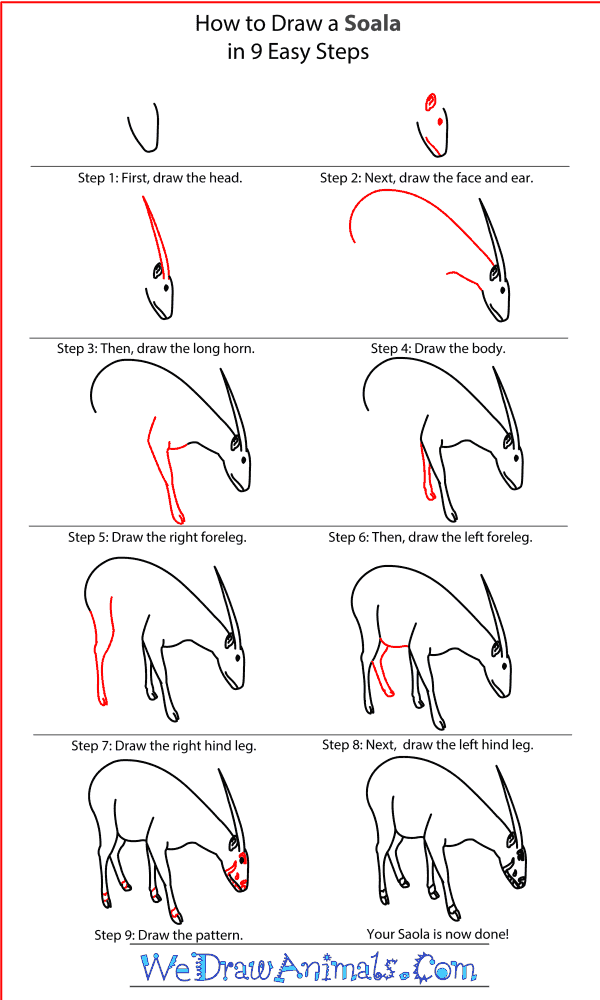In this quick tutorial you'll learn how to draw a Saola in 9 easy steps - great for kids and novice artists.
The images above represent how your finished drawing is going to look and the steps involved.
Below are the individual steps - you can click on each one for a High Resolution printable PDF version.
At the bottom you can read some interesting facts about the Saola.
Make sure you also check out any of the hundreds of drawing tutorials grouped by category.
How to Draw a Saola - Step-by-Step Tutorial
Step 1: Let's draw a Saola by start with a 'U' shape for the head.
Step 2: Draw the face my adding a small dot for the eye, and a curved line up for the mouth. Add the ear at the top as shown.
Step 3: Now, draw a two long lines going up and meeting at a point for the horn.
Step 4: To draw the body, make a long curved line for the back, and then a small curved line at the bottom for the neck.
Step 5: For the first foreleg, draw a small triangle shape for the elbow, then two lines down for the leg. End it with two small toes.
Step 6: Now, add the second foreleg behind the first as shown.
Step 7: Draw the hind leg form the back of the body. Notice it is a bit longer, so the Saola can run fast!
Step 8: Add the belly and the second hind leg.
Step 9: Add a few lines at the bottom of the feet for pattern, as well as a few markings on the face. Not much is known about the Saola because they are very hard to find and were only discovered in 1992! Color the Saola brown, but leave a few white markings on the face.
Interesting Facts about Saolas
Saolas are pretty new to scientists, so not much is known about them. They look and sound like goats. Their horns are long and black and stand straight up on their heads. Their fur is short and red brown with white marking around the face and back side. The body is about 150 centimeters long and 80-90 centimeters tall. They live only in a forest on the boarders of Vietnam and Laos. A Saola eats plants. This animal is considered critically endangered and has caught the attention of scientists all over the world.
Did you know?
- It seems Saolas are more active during early morning and late afternoons.
- Not much study has been done on this animal because they are so hard to find. Only three pictures exist of a Saola in the wild. Only a couple of the animals have been observed in Wildlife Refuges. They normally die after being captured.
- So uncommon that scientists didn’t find it till 1992!
- Saolas can only give birth to one calf at a time.
- Pu Mat National Park counted the known number of Saola between the years 1998-2003.
Lesson Plan Note: Saolas are a great addition to a cultural study of Southeast Asia. Specifically Vietnam and Laos, it is a topic that would work well with all age groups.










